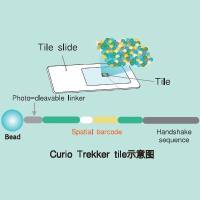Assessment of Cardiac Conduction: Basic Principles of Optical Mapping
互联网
577
Extracellular recordings acquired from electrodes placed on the surface of cardiac tissue have traditionally been used to study the electrophysiological properties of the tissue. While this technique has been used in several studies that have increased our understanding of cardiac arrhythmias and action potential propagation, there are several limitations that have prevented us from seeing a bigger picture of arrhythmia mechanisms. These limitations include the limited number of electrodes and unstable recordings. Optical mapping was developed to increase the temporal and spatial resolution over traditional electrode recordings and ultimately the accuracy of the data analysis. This technology involves using a voltage-sensitive dye that binds to the cell membrane. The fluorescence changes of the dye have a linear relationship to the action potential changes of the cell membrane. These fluorescent changes can then be detected by a photodiode array, a CCD camera or a CMOS camera. This will allow the recording of the action potential in hundreds to thousands of different sites simultaneously. Presented in this chapter are the materials and hardware needed along with step-by-step instructions on setup and techniques used in optical mapping for larger tissue preparations.









